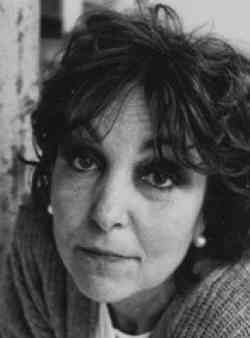
Paula Rego
Paula Rego was a Portuguese artist known for her paintings and prints based on storybooks. Her artistic expression often embodies feminism, enriched by folk motifs from her native Portugal. Rego holds immense cultural significance in Portugal, standing as one of the country's foremost renowned and impactful artists.
Biography of Paula Rego
Born in Lisbon in 1935, Paula Rego was an only child from a wealthy family, enjoying a comfortable upbringing. In 1936, her parents moved to the UK due to her father's studies, leaving Rego with her grandmother, grandfather, and great-grandfather. They returned when she was three, settling in Estoril.
At the age of 16, Rego was sent to a finishing school in Kent, UK. Later, from 1952 to 1956, she studied at The Slade School of Fine Art alongside peers Diana Cumming and Michael Andrews. While she faced challenges in creating accurate to-scale drawings, she gained praise within her art circle, earning the approval of the famous English landscape painter L.S. Lowry.
In 1962, her father purchased a house in London for the artist and her family, which led to her alternating between the new home and Ericeria. While in London, Rego began exhibiting her work as a member of The London Group, the sole female alongside artists like David Hockney and Frank Auerbach. In 1965, Rego participated in a group show titled "Six Artists" at the Institute of Contemporary Arts London (ICA), and she had her debut solo exhibition at the Sociedade Nacional de Belas Artes in Lisbon.
During the 1980s, Rego's paintings delved into highly erotic themes, exploring the complexities of female sexuality and Freudian family drama. In 1987, she joined the Edward Totah Gallery and later Marlborough Fine Art, who have represented her ever since. Her first major retrospective in 1988 spanned across multiple venues, showcasing her large-scale figurative paintings. Notable pieces from this period include "The Family" (1988) and "The Dance" (1988).
Throughout the 1990s, Rego continued her prolific painting, transitioning from paint to pastel. In the 2000s, she embarked on numerous print and drawing series. One of these series, created in 2007, focused on her enduring struggle with depression. Over the past two decades, Rego has solidified her reputation as a highly-skilled printmaker.
In 2009, her native country paid tribute to her by establishing The Paula Rego House of Stories, a museum in Cascais, where she had spent much of her childhood.
Paula Rego passed away on June 8, 2022, after a brief illness.
Paula Rego's Art Style
Paula Rego's remarkable body of work lays bare the inherent contradictions of humanity: fantasy and reality, strength and suppression, and the intertwining of personal and political dimensions. She primarily depicts the human figure from life, allowing her subjects to deeply express their personalities. Rego's paintings often depict groups of figures engaged in interaction, presenting intricate stories with multiple enigmatic threads. Although the actions in the artwork can be confusing, viewers can sense the emotions at play. Like other portraitists of The London Group, Rego delves into individual psychology in her work. However, her incorporation of props and animals introduces a surreal dimension to her art. Her affection for fabric, clothing, and certain poses also echoes the classicism of the Old Masters.
Similar to artists of the New Objectivity movement, such as Otto Dix and George Grosz, Rego skillfully captures the chaos and grotesque human behavior of war on a grand scale. Her artwork also carries potent erotic undertones, akin to those found in the creations of French-Polish artist Balthus, renowned for his depictions of ambiguous pre-pubescent girls. Rego's deep understanding of art history informs her work, recognizing that timeless themes like the torments of love and war yield the most intriguing outcomes for artistic exploration.
Years:
Born in 1935
Country:
Portugal, Lisbon